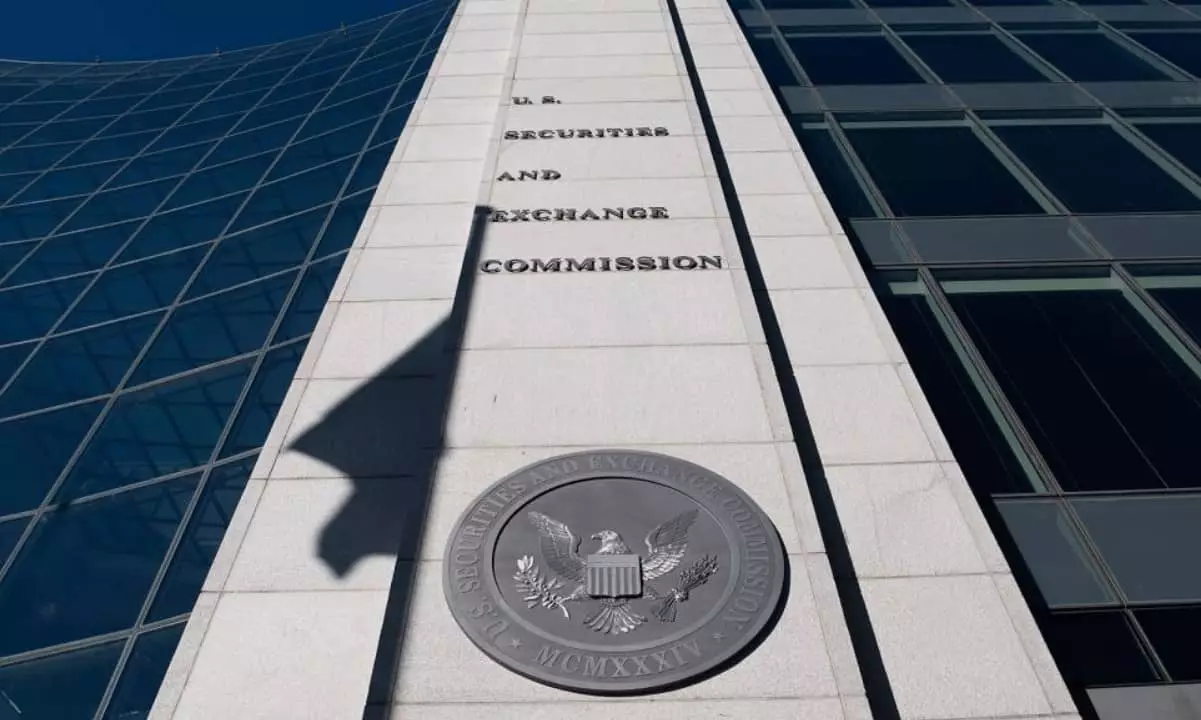In recent weeks, the topic of regulatory practices surrounding cryptocurrency has gained significant traction, particularly with the Securities and Exchange Commission (SEC) under scrutiny. Led by Republican lawmakers such as Rep. Patrick McHenry and Sen. Cynthia Lummis, concerns have emerged regarding the SEC’s Staff Accounting Bulletin No. 121 (SAB 121) regarding crypto custody. This renewed scrutiny raises important questions about the regulatory framework for digital assets and the implications for both institutions and investors in this rapidly evolving landscape.
SAB 121 was introduced as a guiding principle aimed at providing clarity for custodians of digital assets regarding their accounting treatment. The bulletin requires custodians to recognize liabilities connected to digital assets and maintain corresponding offsets at fair market value on their balance sheets. While this may seem to establish a consistent framework, critics argue that it deviates from traditional accounting practices, potentially misrepresenting the custodians’ economic obligations towards clients. Such discrepancies may create an environment of ambiguity that heightens risk for consumers, something the authors of the letter to SEC Chair Gary Gensler emphasized.
The most contentious aspect of SAB 121 is the manner in which it was enacted. Critics assert that the SEC failed to engage in adequate consultation with key regulatory bodies or adhere to the established rulemaking process, thereby raising questions about both its legality and propriety. This perceived lack of transparency is particularly concerning in light of the SEC’s history of contentious engagement with cryptocurrency, which some critics argue has led to an environment ripe with uncertainty for market participants.
Further complicating matters is the revelation that the SEC has granted exemptions to select financial institutions, such as BNY Mellon, which suggest a troubling inconsistency in regulatory enforcement. Reports have surfaced indicating that BNY Mellon received favorable treatment, allowing it to bypass the more stringent requirements of SAB 121 while seeking to expand its crypto custody services. This selective application of the rules raises serious ethical questions about favoritism in regulatory oversight and its implications for competition in the financial sector.
Lawmakers have flagged these exemptions as problematic, asserting that such actions create an uneven playing field where some institutions receive leeway that others do not. This dynamic not only undermines the principles of fair regulation but also compromises investor protections by failing to ensure that all custodians are held to the same standards. The questions surrounding the SEC’s decision-making processes, particularly its reliance on confidential consultations, amplify the calls for reform in how regulatory frameworks are established and interpreted.
In response to the contentious questions raised by the SEC’s handling of SAB 121, lawmakers have called for the rescission of the bulletin on the grounds that it contradicts established regulatory principles. More strikingly, the Government Accountability Office (GAO) has asserted that SAB 121 should have undergone formal rulemaking procedures, thus reopening dialogue on the importance of transparent rulemaking processes in the financial regulation space. The implication is clear: if the regulatory body does not adhere to proper legislative frameworks, it runs the risk of enacting rules that are not only arbitrary but also detrimental to the market’s overarching integrity.
By spotlighting the irregularities in the SEC’s actions, Republican lawmakers are not merely opposed to the substance of SAB 121 but are pushing for a fundamental reassessment of how the agency conducts rulemaking. The emphasis on transparency and fairness in the regulation of crypto custodians highlights the urgent need for a coherent framework that protects both consumers and institutions alike, fostering a healthier environment for innovation in the crypto space.
As discussions around SAB 121 continue to unfold, it’s clear that the trajectory for crypto regulation remains fraught with challenges. The SEC’s procedures, its engagement with key stakeholders, and its treatment of financial institutions will contribute significantly to the trust—or lack thereof—that market participants have in regulatory bodies. Moving forward, achieving a balance between safeguarding investors and promoting innovation in the burgeoning cryptocurrency field will be the litmus test for the SEC. Embracing a more transparent regulatory approach could ultimately establish a framework that supports a dynamic and equitable environment for all players in the digital asset market.


Leave a Reply